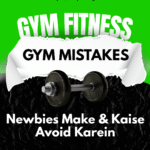Staying fit doesn’t always require expensive gym memberships or heavy weights. One of the most economical and efficient methods for increasing muscle tone, strength, and flexibility is the use of resistance bands. This comprehensive guide will assist you in understanding the proper methods, advantages, and safety precautions to maximize your resistance band training regimen if you’re unsure how to perform resistance band workouts correctly.
Table of Contents
ToggleWhat Are Resistance Bands?
Resistance bands are rubber or latex elastic bands that, when stretched, produce tension. They are available in light, medium, and heavy resistance levels, as well as different shapes and sizes. Like lifting weights, the tension they produce forces your muscles to work against resistance. Their adaptability allows them to be utilized for full-body exercises in a variety of settings, including parks, homes, and even while traveling.
visite:How to Blogger earn money
Benefits of Resistance Band Workouts
Let’s examine why resistance band workouts are so advantageous before getting into How to Do Them Correctly:
Resistance bands are inexpensive and portable, fitting neatly into your suitcase or gym bag.
Workout for the Whole Body: You can work out your arms, legs, chest, back, and core.
Joint-Friendly: Resistance bands lower your risk of injury because they are less taxing on your joints than large weights.
Enhances Mobility and Flexibility: Consistent exercise expands your range of motion.
Suitable for All Levels: Resistance bands can be adjusted to your strength level, regardless of your level of experience as an athlete.
Types of Resistance Bands
Understanding the various kinds of resistance band workouts is crucial to knowing How to Do Them Correctly:
Loop bands are tiny, circular bands that are primarily used for exercises involving the lower body, such as glute bridges and squats.
Tube bands with handles are excellent for exercises involving the upper body, such as chest presses and bicep curls.
Therapy bands are thin and flat, making them perfect for mild stretching and rehabilitation.
Figure-8 Bands: Used for shoulder and arm exercises, these bands are shaped like the number 8.
Choose one based on your fitness objectives, as each type has a distinct function.
How to Do Resistance Band Workouts Properly – Step-by-Step
Now, let’s dive into the practical side—how to do resistance band workouts properly for different muscle groups.
1. First Warm-Up
Before using resistance bands, always warm your body up by doing some light cardio or stretching for 5–10 minutes. In this way, you will prevent muscle stiffness and prepare your body for the workout.
2. Upper Body Workouts
a) Bicep Curl
Stand on the band with your feet shoulder-width apart.
Hold the handles or ends of the band with palms facing forward.
Slowly curl arms up toward shoulders, keeping elbows close to your body.
Lower down slowly and repeat for 12–15 repetitions.
Tip: Do not swing your arms. Control them to get full tension throughout the movement.
b) Shoulder Press
Step on to the band and hold handles to shoulder height.
Push the bands upward until your arms are fully extended.
Lower slowly and repeat.
c) Chest Press
Secure the band behind you- for instance, around a pole or a door handle.
Hold both handles and press forward, like in a bench press.
Control the return movement.
3. Lower Body Workouts
a) Squats with Band
Place both feet on the band and grasp the handles near your shoulders.
Lower into a squat position, keeping your back straight.
Slowly stand up, maintaining tension in the band.
b) Glute Bridge with Band
Place a loop band above your knees.
Lie on your back, knees bent, feet flat.
Lift your hips up, squeezing your glutes, then lower slowly.
c) Side Steps
Wrap a mini resistance band around your ankles or knees.
Slightly bend your knees and take small side steps.
Keep constant tension in the band.
4. Core Workouts
a) Seated Band Twist
Sit on the floor, wrap the band around your feet, and hold both ends of it.
Twist your torso from side to side, engaging your obliques.
b) Standing Ab Crunch
Anchor the band above your head.
Hold the handles and pull them down as you crunch your abs forward.
These moves strengthen abdominal muscles and improve your posture.
Form Tips – Doing It the Right Way
Pay attention to your form and control if you’re serious about learning how to perform resistance band workouts correctly.
Preserve Tension: Throughout the movement, never let the band go totally loose.
Controlled Motion: Slow, steady motion is more effective than jerking or tugging too quickly.
Maintain a straight back, a raised chest, and relaxed shoulders for optimal posture.
Breathe correctly by inhaling when starting over and exhaling when exerting yourself (such as when pushing or pulling).
As you get stronger, use bands with more tension, or cut the length of the band to increase resistance.
Common Mistakes to Avoid
When learning how to perform resistance band exercises Avoid these novice blunders:
The band may snap or lose its elasticity if it is overstretched.
Ignoring Warm-Up: To avoid strained muscles, always warm up.
Bad Anchoring or Grip: Before beginning, make sure the band is firmly in place.
Skipping Progression: Rather than going straight to a heavy band, increase resistance gradually.
Incorrect Breathing: Dizziness and decreased performance can result from holding your breath during repetitions.
Sample 20-Minute Resistance Band Routine for Beginners
Try this quick full-body exercise:
15 repetitions of squats with a band
12 repetitions of the chest press
12 repetitions of bicep curls
12 repetitions of the shoulder press
Side Steps: 15 steps on each side
Glute Bridge: 15 repetitions
15 twists per side for the seated band twist
For a full session, repeat the circuit two or three times.
Safety and Maintenance Tips
Before using your bands, always make sure they are free of cracks or tears.
Keep them out of direct sunlight in a cool, dry location.
Use water and mild soap to clean them once in a while.
When bands begin to show signs of wear or lose their elasticity, replace them.
Final Thoughts
How to Perform Resistance Band Exercises You don’t need a gym to change your fitness routine properly. These bands are easy-to-use yet effective tools for endurance, strength, and flexibility. Resistance bands offer countless workout variations to push your body, regardless of your level of experience.
Maintain consistency, pay attention to form, and progressively up the ante. You’ll eventually notice that a simple band has improved your strength, posture, and muscle tone!


